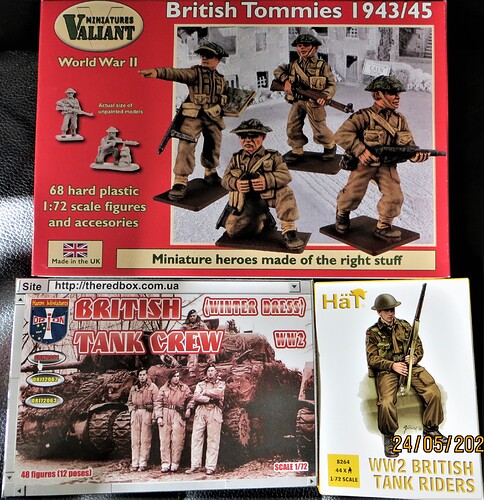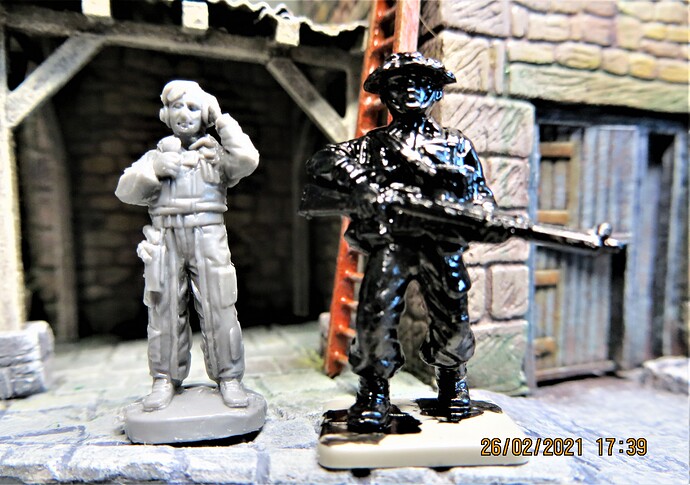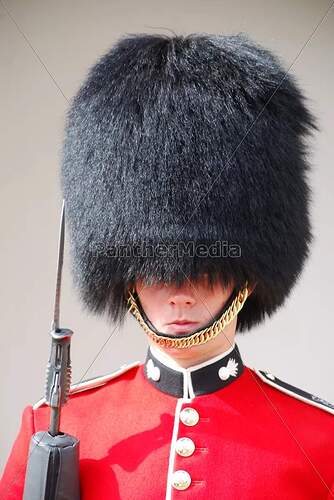Hi all,
I am in the process of constructing my first ever ‘braille’ scale…specifically 1/72nd in my case…diorama in a group build (link below for anyone interested}.
I am looking to add a third vehicle, a small scout/command car to sit in the gateway to the field.
Searching a number of sites I’ve seen some interesting options, with many of them listed as 20mm kits (not a scale I’ve heard of), and equating these to 1/72nd. Being a newbie to ‘braille’ kits I’m concerned about the scale claims, I have already experienced the difference in scales when I tried a 1/76th Sherman alongside a 1/72nd, clearly noticeable variation. I know they’re both classed as 4mm scale, but are actually 4.233 (1/72nd) and 4.011 (1/76th) hence the size discrepancy.
So, do 20mm kits equate to 1/72nd, or are they 1/76th, or a completely different scale…anyone know, ![]() ?
?
Cheers, ![]() ,
,
G



 ,
,

 .
.